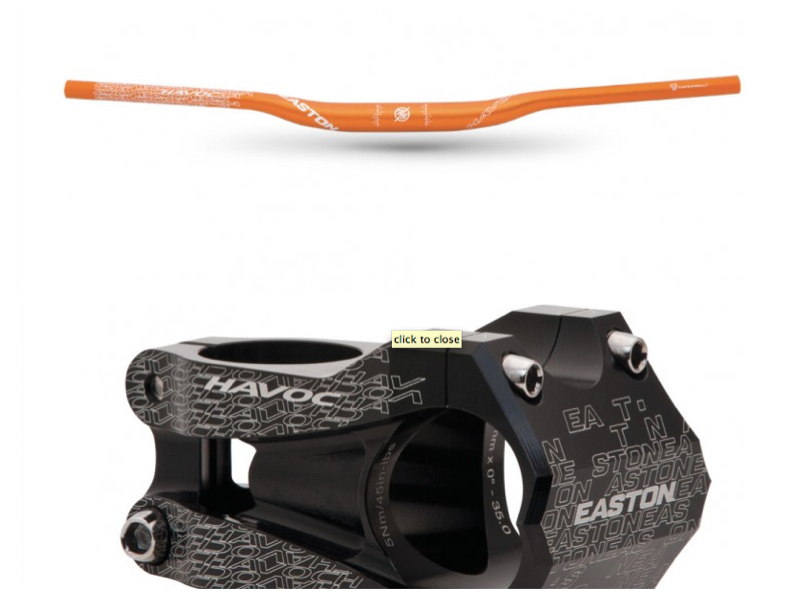The stem and handlebar is one of those parts that no one wants to see fail, the general result being significant injury. And with this, it seems that the industry is forever pushing new concepts that claim the usual benefits; stiffer, stronger, increased durability and lighter. Stems are confusing enough with various rises and lengths without all the additional clamp standards.
Let’s take a look at the multiple stem dimensions to see where we have come from and where we’re going.
First we’ll look to the front of the stem, where the handlebar is held. A few years ago the industry decided on the “Oversized” standard of 31.8mm, replacing the now near defunct 25.4mm size of mountain bikes and 26mm of Italian drop bars (Road). 31.8mm promised to offer a stronger, more dependable and stiffer handlebar; although 25.4mm still remains the ultimate weight weenies choice. In addition to these claimed benefits, 31.8mm created a standard size between road and mountain bikes; allowing smaller product ranges and reducing the chance of miss-matching stem/handlebar combinations. [private]

Just as everything was settling in and the industry was sitting on a common standard; enter 35mm. As handlebar widths have stretched out over recent years, the limitations of 31.8mm is being questioned and brands such as Easton and Kore are touting that the 35mm diameter leads to a yet again stronger and lighter setup. Currently these brands are pushing the benefits of 35mm for freeride and downhill where wide bars and large impacts are the norm, however with bar widths extending for all disciplines, it’s likely that 35mm will become a real alternative in future.

Now to the back of the stem where it is a whole different matter.
The standard stem today clamps to a 1 1/8” diameter threadless steerer tube (the fork piece that extends through the frame head tube). It wasn’t always a threadless steerer that uses pinch bolts to hold the stem in place; well over a decade ago the quill stem was the standard. Using a threaded 1” steerer tube, the quill stem had a single top mounted bolt that when tightened, caused two internal wedges to slide diagonally against each other to clamp the inside wall of the steerer, headset bearings were then tightened using external locknuts that were threaded onto the steerer. What led to the demise of the quill system were such factors as decreased manufacturing costs, easier consumer servicing, increased stiffness and greater clamping pressure.
A few years ago, an oversized steerer size of 1 ½”” was looking to become the next big thing, claiming to offer the stiffness and strength benefits of a dual or triple clamp fork without the steering restriction or additional weight. 1 ½” never took off due to the emergence of the now industry standard tapered steerer tube; offering a solid 1 ½” for the lower bearing and the common 1 1/8” for the top bearing and stem clamp region.
And much like any other standard in the bike industry there is always room for change; enter 1 ¼” – 1 ½”, Aka ‘OD2’. This is yet another diameter that is being pushed by Giant (And in the road by German brand Canyon). The idea here is that it creates a less severe taper on the steerer tube and provides additional stiffness and strength. Giant claim that it improves front-end stiffness by as much as 30% – certainly a big claim. It’s the second season of OD2 now and numerous brands are offering compatible stems, however no other large bike manufacturer has started to spec this new concept on their bikes; it’s yet to be seen if this will become the new standard or remain a “Giant thing”.

The downhill world see’s all different stems and recent trends do away with clamping to the steerer and rather make use of the forks top crown that sits above the head tube. Here the Rockshox ‘Boxxer’ direct mount standard, using 4 bolts that connects the stem to the fork crown has become the norm. Direct mounts offer many benefits; offering increased strength, superior steering stiffness, far lower weight and the ability for a lower bar height. An even newer take on the direct mount is wide handlebar clamp placement, brought about by motocross width handlebars; this allows for even load distribution and greater stiffness. With the likes of 35mm handlebars, the direct mount stem is offering a setup with impeccable stiffness and unbeatable strength.

If you’re buying a bike soon, it’ll likely feature 31.8mm handlebars and a 1 1/8” steerer clamp, and don’t expect this to change soon. Certainly as the use of carbon fibre and other advanced materials become more prominent, and the push to have the highest stiffness to weight product to market, there is no question we will see new concepts and following standards appear in near time. [/private]